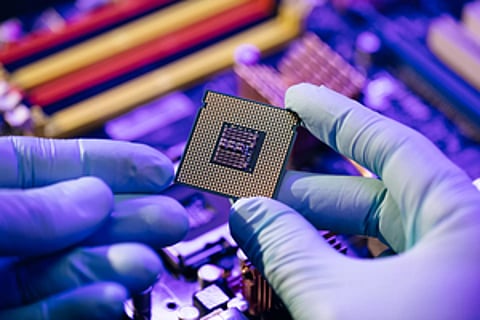

THIRUVANANTHAPURAM : Researchers in the University of Kerala have developed the know-how for manufacturing cost-effective semiconducting oxides that have a range of applications, mainly as sensors in electronics industry.
The new method, which enables production of the semiconductor material in low temperature with lesser infrastructure requirement, is poised to revolutionise existing manufacturing processes.
The research was carried out by Akhil M Anand as part of his doctoral thesis under the guidance of R Jayakrishnan, associate professor, physics, KU. The findings have been published in the international journal ‘Materials for renewable and sustainable energy’.
The backbone of the semiconducting industry is the use of high-temperature processes. State-of-the-art machinery and ultra pure clean room facilities are required for the growth of semiconductors and devices. This involves huge investment. The researchers have developed a low-temperature process for the growth of cupric oxide-based sensor. “By using water soluble chemicals, we have been able to grow the semiconductor material in pure form that too in ordinary lab conditions,” Jayakrishnan told TNIE.
For instance, in a smartphone, semiconducting oxides have diverse applications, from a chip to its camera and its display. The use of cost-effective semiconducting oxides is poised to bring down the production cost of electronic devices as well. “Cupric oxide is used in solar cells as a photovoltaic material. It is also used as a sensor material in a wide range of cameras,” Jayakrishnan explained. He said while existing semiconducting materials are manufactured in temperatures ranging up to 500 degrees Celsius, the cupric oxide material was made at 60 degrees Celsius.
The research further demonstrated the sensor’s ability to exhibit switching behaviour when exposed to light radiations. Interestingly, the researchers claim the ‘self-assembled’ cupric oxide material is more responsive to ultraviolet and visible light than the same material grown by other energy-intensive techniques.